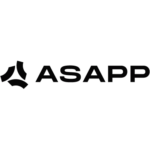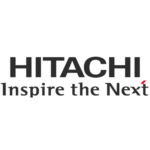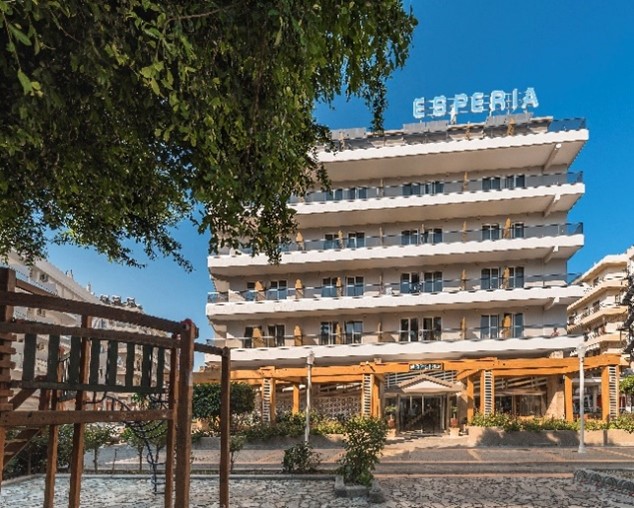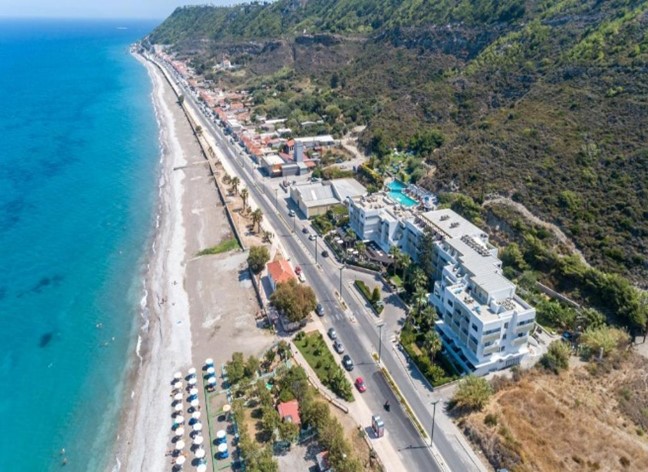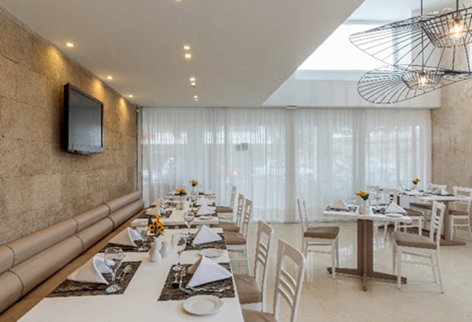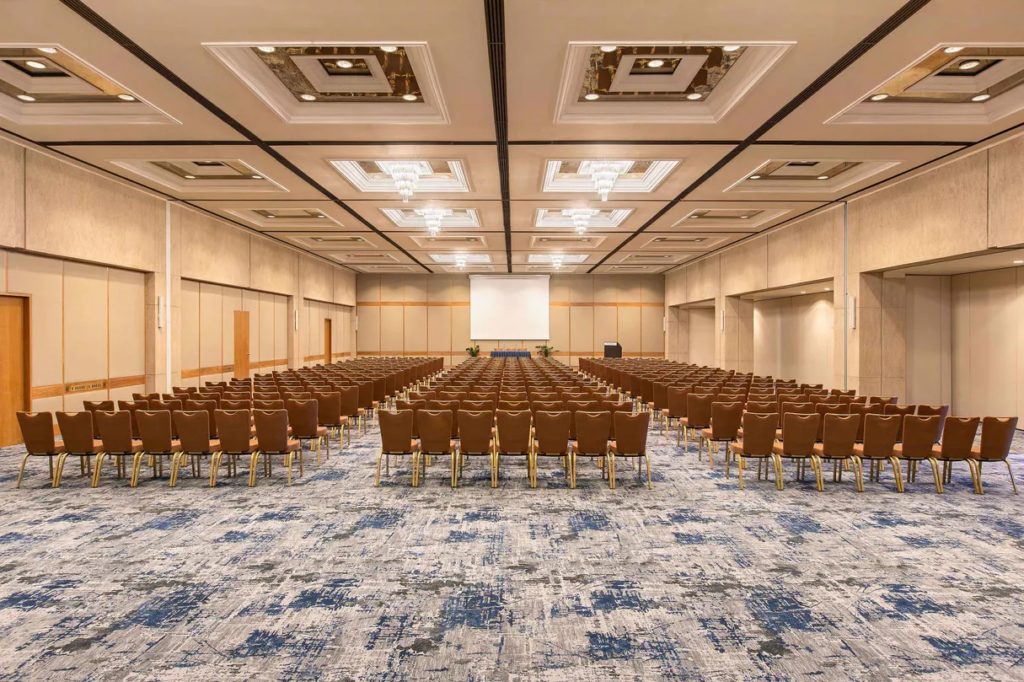
ICASSP Paper Guidelines
Table of Contents
Part I: General Information
Part II: Preparation of the Paper
Part III: Submission and Review of the Paper
- File Format
- Information for LaTeX users
- File Size Limit
- File Name
- Electronic Paper Submission
- Preprints, including Arxiv
- IEEE Copyright Transfer Form
- Online Review Process
- Monitor Your Submission Status
- Rebuttal Guide
- Notification of Acceptance
- Required Author Registration
- No-Show Policy
- Copyright Issues for Web Publication
Part IV: Preparation of the Presentation
Part I: General Information
Procedure
The ICASSP 2023 paper submission and review process is being conducted in a manner similar to previous conferences:
- Authors who wish to participate in the conference will create documents consisting of a complete description of their ideas and applicable research results in a maximum of 4 pages for technical content including figures and possible references, and with one additional optional 5th page containing only references. Papers will be submitted through the ICASSP 2023 submission website using Microsoft’s Conference Management Toolkit (CMT).
- Paper submissions will be reviewed by experts selected by the conference committee for their demonstrated knowledge of particular topics. Authors will have an opportunity to respond to the reviews during the author response period. The progress and results of the review process will be posted on this website, and authors will also be notified of the review results by email.
- Check the ICASSP 2023 submission website for the status of your paper.
- If your paper is accepted, submit the final version of the paper and copyright form electronically. This paper submission must be submitted in final, publishable form before the submission deadline listed below.
- If your paper is accepted, it will be assigned to either a lecture or a poster session by the program committee. Prepare a lecture or poster presentation accordingly, following the guidelines included in this document.
- All papers accepted to ICASSP 2023 will be published 30 days prior to the first day of the conference and will be freely accessible and downloadable by all in the final format until the end of the final day of the conference.
The review process is being conducted entirely online. To make the review process easy for the reviewers, and to assure that the paper submissions will be readable through the online review system, we ask that authors submit paper documents that are formatted according to the Paper Kit instructions included here.
Requirements
Papers may be no longer than 5 pages, including all text, figures, and references, and the 5th page may contain only references.
Papers must be submitted by the deadline. There will be no exceptions.
Accepted papers MUST be presented at the conference by one of the authors. One of the authors MUST register for the conference at one of the non-student rates offered, and MUST register before the deadline given for author registration. Failure to register before the deadline will result in automatic withdrawal of your paper from the conference proceedings and program. A single registration may cover up to four (4) papers.
ICASSP 2023 requires that each accepted paper be presented in-person by one of the authors at the conference according to the schedule published, and the guidelines posted below. Any paper accepted into the technical program, but not presented will be withdrawn from the official proceedings archived on IEEE Xplore.
Correspondence
Please make sure to include the conference name (ICASSP 2023) and your paper number on all correspondence.
Additional questions regarding submission of papers should be directed to the following address:
Frequently Asked Questions
- Document Preparation
- 1) The LaTeX Template, Microsoft Word Template, and PDF Sample files do not have the exact margins or measurements as those described in the paper kit. What are the correct measurements?
- 2) I need more time to complete my manuscript; I cannot complete it by the published deadline. Can I have an extension?
- 3) My manuscript has authors from more than 2 affiliations; My manuscript has several authors. But the LaTeX template supports only 2 authors. How should I list multiple authors in the heading of my manuscript?
- Manuscript Submission
- 4) How will I know if my submission is valid for review?
- 5) My paper’s review status on CMT says “Not Available.” Have you received my paper?
- 6) Why did my submission fail document inspection? Can I try again?
- 7) How can I withdraw or cancel my submission?
- 8) I recently discovered that I am required to acknowledge the sponsor of my research in order to receive funding, but the deadline for submitting the final manuscript has passed. What should I do?
- Registration
- 9) The paper kit and web site state that every paper must have an author registered by a certain date. If I am the presenting author of multiple papers, does this mean I should register multiple times?
- 10) The web site states that only non-student registrations can be linked with accepted papers. I am a student and will be the presenting author; how should I register?
- 11) The members of our team have not yet decided who will be the one(s) to attend and present our paper(s), but the author registration deadline is approaching. Can we change the name of the person registered later on?
- 12) When I registered, I was not a member of IEEE, but I recently did join. Can I receive a refund of the difference between the member and non-member registration fees?
Document Preparation
1)The LaTeX Template, Microsoft Word Template, and PDF Sample files do not have the exact margins or measurements as those described in the paper kit. What are the correct measurements?
1-Ans) The Paper Kit description should be considered the final word. Because of software version differences, installed font differences, and other system-specific issues, the final PDF or Postscript file that you create from the given templates may not exactly match the sample manuscript found in the paper kit. The measurements given in these templates and in the official Paper Kit description are not intended to be followed with extreme precision. However, the general structure and layout of the document should be substantially the same as the templates and sample manuscript. This means: the title should appear at the top of the first page, the author list should appear beneath the title, the first paragraph of the document should be the abstract section, the document should be in two-column format with reasonable margins and column spacing, and the font size should be no smaller than 9pt.
2)I need more time to complete my manuscript; I cannot complete it by the published deadline. Can I have an extension?
2-Ans) The published manuscript submission deadline was selected so that submitted manuscripts may receive sufficient and thorough reviews and so that presenting authors of accepted papers will have sufficient time to arrange for travel to the event site. By granting an extension, the rest of the development of the technical program would be delayed. The deadline for submission of manuscripts is known well in advance, thus, no extension will be granted for any reason.
3)My manuscript has authors from more than 2 affiliations; My manuscript has several authors. But the LaTeX template supports only 2 authors. How should I list multiple authors in the heading of my manuscript?
3-Ans) There are several formats commonly used for formatting author lists of 3 or more authors or where there are 3 or more different affiliations for authors. The preferred method is to list the author names with identifying marks (superscript numbers, for example) and then a legend below the name list with the respective affiliation descriptions. Be sure that the author list does not exceed the margins of the page. An example is provided:
\name{Author Name$^{\star \dagger}$ \qquad Author Name$^{\star}$ \qquad Author Name$^{\dagger}$}
\address{$^{\star}$ Affiliation Number One \\
$^{\dagger}$}Affiliation Number Two
Manuscript Submission
4)How will I know if my submission is valid for review?
4-Ans) All submitted manuscripts will be inspected for general adherence to the paper kit guidelines (i.e. page count limits, page margins, font problems) and submission procedure (i.e. the title on the uploaded file matches the title typed into the web submission form, the author list on the uploaded file matches the author list typed into the web submission form, etc.). Authors designated as “contact author” will be notified by email only if any problems are found. The status of your submission can be checked online at any time using the assigned paper number and an access code.
5) My paper’s review status on CMT says “Not Available.” Have you received my paper?
5-Ans) After you complete the initial submission, CMT will mark the review status as “Not Available.” This is normal, as your paper is pending review, and therefore the reviews are not available. If you have properly completed the submission form your paper has been properly submitted.
6) Why did my submission fail the document inspection? Can I try again?
6-Ans) There are many reasons why a submitted manuscript might fail the “inspection” process. The inspection failure notification email will contain a description of the problem. The “Revise an already-submitted paper” link on the website will allow for revising of submissions which did not pass inspection. Typically 3-4 days is allowed for corrections to be made in such cases. The most common reasons for inspection failure are:
- The author list shown on the uploaded document file does not match the author list typed into the online form. These two lists MUST MATCH EXACTLY in author names and the order in which these names appear on the uploaded document.
- Page numbers appear on the uploaded file. Do not include page numbers in the submitted manuscript.
- The author list on the uploaded manuscript is blank. Unless explicitly specified otherwise, the review process is not “double-blind”. The submitted manuscript should be in publish-ready format.
7)How can I withdraw or cancel my submission?
7-Ans) Send an email to the general support email address (papers@2023.ieeeicassp.org) requesting the withdrawal of the manuscript. This email MUST include the assigned paper ID and should include in the cc: line all of the authors currently listed on the manuscript. If the latter is not done, then a note will be sent to all authors requesting confirmation of the request as withdrawal of a manuscript can only be done on the agreement of all authors.
8)I recently discovered that I am required to acknowledge the sponsor of my research in order to receive funding, but the deadline for submitting the final manuscript has passed. What should I do?
8-Ans) The deadlines for final manuscript submission are firm and are chosen to allow sufficient time for the preparation and production of the conference proceedings in time for distribution at the event. Be sure to check with financial sponsors before the final manuscript submission deadline concerning this potential requirement.
Registration
9)The paper kit and web site state that every paper must have an author registered by a certain date. If I am the presenting author of multiple papers, does this mean I should register multiple times?
9-Ans) No, each valid registration to the conference can be linked with up to 4 accepted papers. Note that the registered person should be a named author on any papers he or she is linking with the registration.
9)The web site states that only non-student registrations can be linked with accepted papers. I am a student and will be the presenting author; how should I register?
10-Ans) The policy is that each paper should be linked with a non-student-rate registration. Students who are the only presenting authors of papers should choose one of the non-student rates. For example, a student who is an IEEE Graduate Student Member and is the only attending author of a paper should choose to register at the IEEE Member rate. A student who is not a member of IEEE in any way should choose to register at the Non-Member rate. Please DO NOT have an author who does not intend to attend register only to link papers.
11)The members of our team have not yet decided who will be the one(s) to attend and present our paper(s), but the author registration deadline is approaching. Can we change the name of the person registered later on?
11-Ans) A replacement presenter can register first, and then a refund for the original presenter can be considered, in conjunction with all other registration policies. Such requests must be received no later than 2 weeks prior to the start of the event.
12)When I registered, I was not a member of IEEE, but I recently did join. Can I receive a refund of the difference between the member and non-member registration fees?
12-Ans) No, one must be a member of IEEE at the time of registration in order to receive the lower registration fee benefit. Joining IEEE can be done online quickly and the Member Number is assigned within a few days in most cases.
Part II: Preparation of the Paper
Document Formatting
Use the following guidelines when preparing your document:
LENGTH: You are allowed a total of 5 pages for your document. Up to 4 pages may contain technical content, figures, and references, while the 5th page may contain only references. This is the maximum number of pages that will be accepted, including all figures, tables, and references. Any documents that exceed the 5 page limit or have a 5th page containing anything other than references, will be rejected.
LANGUAGE: All proposals must be in English.
MARGINS: Documents should be formatted for standard letter-size (8-1/2″ by 11″ or 216mm by 279mm) paper. Any text or other material outside the margins specified below will not be accepted:
- All text and figures must be contained in a 178 mm x 229 mm (7 inch x 9 inch) image area.
- The left margin must be 19 mm (0.75 inch).
- The top margin must be 25 mm (1.0 inch), except for the title page where it must be 35 mm (1.375 inches).
- Text should appear in two columns, each 86 mm (3.39 inch) wide with 6 mm (0.24 inch) space between columns.
- On the first page, the top 50 mm (2″) of both columns is reserved for the title, author(s), and affiliation(s). These items should be centered across both columns, starting at 35 mm (1.375 inches) from the top of the page.
- The paper abstract should appear at the top of the left-hand column of text, about 12 mm (0.5″) below the title area and no more than 80 mm (3.125″) in length. Leave 12 mm (0.5″) of space between the end of the abstract and the beginning of the main text.
A format sheet with the margins and placement guides is available in the following file formats:
- PDF file (When you print this file, make sure the “shrink to fit” box is not checked!)
These files contain lines and boxes showing the margins and print areas. If you print one of these files, then stack it atop your printed page and hold it up to the light, you can easily check your margins to see if your print area fits within the space allowed.
TYPE:
Face: To achieve the best viewing experience for the review process and conference proceedings, we strongly encourage authors to use Times-Roman or Computer Modern fonts. If a font face is used that is not recognized by the submission system, your proposal will not be reproduced correctly.
Size: Use a font size that is no smaller than 9 points throughout the paper, including figure captions. In 9-point type font, capital letters are 2 mm high. For 9-point type font, there should be no more than 3.2 lines/cm (8 lines/inch) vertically. This is a minimum spacing; 2.75 lines/cm (7 lines/inch) will make the proposal much more readable. Larger type sizes require correspondingly larger vertical spacing.
TITLE: The paper title must appear in boldface letters and should be in ALL CAPITALS. Do not use LaTeX math notation ($x_y$) in the title; the title must be representable in the Unicode character set. Also try to avoid uncommon acronyms in the title.
AUTHOR LIST: The authors’ name(s) and affiliation(s) appear below the title in capital and lower case letters. ICIP does not perform blind reviews, so be sure to include the author list in your submitted paper. Proposals with multiple authors and affiliations may require two or more lines for this information. The order of the authors on the document should exactly match in number and order the authors typed into the online submission form.
The LaTeX template has instructions for listing one or two authors. If you need to list more than 2 authors, please use the following structure:
\name{Author Name$^{\star \dagger}$ \qquad Author Name$^{\star}$ \qquad Author Name$^{\dagger}$}
\address{$^{\star}$ Affiliation Number One \\
$^{\dagger}$}Affiliation Number Two
ABSTRACT: Each paper should contain an abstract of approximately 100 to 150 words that appears at the beginning of the document. Use the same text that is submitted electronically along with the author contact information.
INDEX TERMS (KEYWORDS): Enter up to 5 keywords separated by commas.
BODY: Major headings appear in boldface CAPITAL letters, centered in the column. Subheadings appear in capital and lower case, either underlined or in boldface. They start at the left margin of the column on a separate line. Sub-subheadings are discouraged, but if they must be used, they should appear in capital and lower case, and start at the left margin on a separate line. They may be underlined or in italics.
REFERENCES: List and number all bibliographical references at the end of the paper. The references can be numbered in alphabetic order or in order of appearance in the document. When referring to them in the text, type the corresponding reference number in square brackets as shown at the end of this sentence [2]. An additional final page (the fifth page, in most cases) is allowed, but must contain only references to the prior literature.
The end of the document should include a list of references containing information similar to the following example:
[1] D. E. Ingalls, “Image Processing for Experts,” IEEE Trans. ASSP, vol. ASSP-36, pp. 1932-1948, 1988.
ILLUSTRATIONS & COLOR: Illustrations must appear within the designated margins. They may span the two columns. If possible, position illustrations at the top of columns, rather than in the middle or at the bottom. Caption and number every illustration. All halftone illustrations must be clear in black and white. Since the printed proceedings will be produced in black and white, be sure that your images are acceptable when printed in black and white (the electronic, conference-distributed proceedings and the IEEE Xplore proceedings will retain the colors in your document).
PAGE NUMBERS: Do not put page numbers on your document. Appropriate page numbers will be added to accepted papers when the conference proceedings are assembled.
Templates
The following style files and templates are available for users of LaTeX and Microsoft Word:
- LaTeX style file with margin, page layout, font, etc. definitions.
- BiBTeX style file with bibliography style definitions.
- LaTeX template file, an example of using the “spconf.sty” and “IEEEbib.bst” files above.
- PDF generated from the template file.
- Sample strings.bib and refs.bib files.
- Sample image1.eps, image3.eps and image4.eps files, referenced in the LaTeX template.
- Word 97/2000 Sample, a template of correct formatting and font use.
We recommend that you use the Word file or LaTeX files to produce your document, since they have been set up to meet the formatting guidelines listed above. When using these files, double-check the paper size in your page setup to make sure you are using the letter-size paper layout (8.5″ X 11″) or A4 paper layout (210mm X 297mm). The LaTeX environment files specify suitable margins, page layout, text, and a bibliography style.
In particular, with LaTeX, there are cases where the top-margin of the resulting Postscript or PDF file does not meet the specified parameters. In this case, you may need to add a \topmargin=0mm command just after the \begin{document} command in your .tex file. The spacing of the top margin is not critical, as the page contents will be adjusted on the proceedings. The critical dimensions are the actual width and height of the page content.
Part III: Submission and Review of the Paper
The review process will be performed from the electronic submission of your paper. To ensure that your document is compatible with the review system, please adhere to the following compatibility requirements:
File Format
The ‘IEEE Requirements for PDF Documents’ MUST be followed EXACTLY. The conference is required to ensure that documents follow this specification. The requirements are enumerated in:
Papers must be submitted in Adobe’s Portable Document Format (PDF) format.
PDF files:
- must not have Adobe Document Protection or Document Security enabled,
- must have either ‘US Letter’ or ‘A4’ sized pages,
- must be in first-page-first order, and
- must have ALL FONTS embedded and subset.
ALL FONTS MUST be embedded in the PDF file. There is no guarantee that the viewers of the paper (reviewers and those who view the electronic proceedings after publication) have the same fonts used in the document. If fonts are not embedded in the submission, you will be contacted by ICASSP and asked to submit a file that has all fonts embedded. Please refer to your PDF file generation utility’s user guide to find out how to embed all fonts.
Information for LaTeX users
Generating a PDF file is straightforward for all LaTeX packages we are aware of. When preparing the paper under LaTeX, it is preferable to use scalable fonts such as Type I, Computer Modern. However, quite good results can be obtained with the fonts defined in the style file recommended above (spconf.sty).
PDF files with Postscript Type 3 fonts are highly discouraged. PDF and PostScript files utilizing Type 3 fonts are typically produced by the LaTeX system and are lower-resolution bitmapped versions of the letters and figures. It is possible to perform a few simple changes to the configuration or command-line to produce files that use PostScript Type 1 fonts, which are a vector representation of the letters and figures. An excellent set of instructions is found at:
Creating quality Adobe PDF files from TeX with DVIPS
For most installations of LaTeX, you can cause dvips to output Type 1 fonts instead of Type 3 fonts using the -Ppdf option when executing dvips. The resulting Postscript file will reference the Type 1 Computer Modern fonts, rather than embedding the bitmapped Type 3 versions, which cause problems with printers.
You may also need to tell dvips to force letter sized paper with the option: -t letter.
Some LaTeX installations also include pdflatex, which produces acceptable PDF files as well.
File Size Limit
Authors will be permitted to submit a document file up to 100 MB (megabytes) in size, which should be sufficient for almost all tasks. To request an exception, contact the paper submission technical support at: papers@2023.ieeeicassp.org.
Electronic Paper Submission
When you have your document file ready, gather the following information before entering the submission system:
- Document file in PDF format
- Affiliation, email address, and mailing address for each author
- Paper title
- Text file containing paper abstract text, in ASCII text format (for copying and pasting into web page form)
To submit your document and author information, go to the ‘Paper Submission‘ link on the ICASSP 2023 homepage:
The submission system will present an entry form to allow you to enter the paper title, abstract text, review category, and author contact information.
Please note that the list of review categories is very detailed. Please read through the entire list of paper topics before beginning your submission.
ALL authors must be entered in the online form, and must appear in the online form in the same order in which the authors appear on the PDF.
After you submit this information, the system will display a page with the data that you entered so that you may verify its accuracy. If you need to change the data to fix a mistake, you may use the back button on your browser to return to the information entry form. Once you approve of the data that you have entered, you may choose your document file for upload at the bottom of the verification page. When you click on the button labeled ‘Continue’ at the bottom of this page, the page will check the filename extension to make sure it matches the submission criteria, then your browser will upload your file to our server. Depending on the size of your file and your internet connection speed, this upload may take a few minutes. At the end of a successful upload, you will see a confirmation page displaying the paper number that is assigned to you, and an email message will be sent to the corresponding authors’ email addresses to confirm that the file has been uploaded. If you do not see the confirmation page after uploading your file, we may not have successfully received your file upload. If you encounter trouble, contact the paper submission support at: papers@2023.ieeeicassp.org.
Preprints, including Arxiv
Authors may post their preprints in the following locations:
- Author’s personal website
- Author’s employer’s website
- arXiv.org
- TechRxiv.org
- Funder’s repository*
This does not count as a prior publication. If copyright to the paper was transferred to IEEE through the completion of an IEEE Copyright Form before the preprint is posted, IEEE must be credited as the copyright holder with the following statement included on the initial screen displaying IEEE-copyrighted material:
“© 20XX IEEE. Personal use of this material is permitted. Permission from IEEE must be obtained for all other uses, in any current or future media, including reprinting/republishing this material for advertising or promotional purposes, creating new collective works, for resale or redistribution to servers or lists, or reuse of any copyrighted component of this work in other works.”
Upon publication of the paper, the paper’s Digital Object Identifier (DOI) should be added.
Complete information regarding posting of your paper are detailed at https://conferences.ieeeauthorcenter.ieee.org/get-published/post-your-paper/.
IEEE Copyright Transfer Form
All accepted papers must have an IEEE Electronic Copyright form submitted before the manuscript can be included in the conference proceedings. You will be required to submit the form during the submission of the final version of the paper.
Online Review Process
Your submitted paper must be submitted in PDF format. Then it will be visually inspected by our submission system staff to assure that the document is readable and meets all formatting requirements to be included in a visually pleasing and consistent proceedings publication for ICASSP 2023. If our submission inspectors encounter errors with your submitted file, they will contact you to resolve the issue. If your paper passes inspection, it will be entered into the review process. A committee of reviewers selected by the conference committee will review the documents and rate them according to quality, relevance, and correctness. The conference technical committee will use these reviews to determine which papers will be accepted for presentation in the conference. The result of the technical committee’s decision will be communicated to the submitting authors by email, along with any reviewer comments, if any.
Monitor Your Submission Status
After you submit your document, you may monitor the status of your paper as it progresses through the submission and review process by using the Paper Status website available at:
Rebuttal Guide
This year, in a change aiming to improve review quality, all reviewers of a paper will have anonymous access to each other’s reviews for that paper, as well as the authors’ rebuttal. Reviewers have the option to read your rebuttal and will be able to modify their review and the overall recommendation to the technical program committee.
- A single one-page PDF rebuttal may be prepared to address all reviewer comments.
- Rebuttals that exceed a single PDF page will be flagged and not be considered in the decision process.
- The rebuttal is format free. Authors may freely choose one- or two-column, their favored font type and size, line space or page margin, etc. If proper, you may include detailed math derivations, more results (curves, plots, figures), besides text explanations to justify your claims and address reviewers’ concerns or doubts. However, please make sure the rebuttal is readable. We recommend you don’t use a font smaller than 9pt.
- Do not promise to expand your paper to address all the questions raised by the reviewers, as you will not be able to change your article substantially. These promises are likely not to be taken seriously.
- Ensure your PDF is able to be opened by standard PDF viewers or a web browser. Note that it is authors’ responsibility to create readable and valid PDFs, and if there are readability problems, authors won’t be notified for such incidents.
- Keep your rebuttal polite! Being confrontational does not bring any added value to the paper and the review process. However, if you feel you have received a review that was not courteous, you should point this out.
Notification of Acceptance
Authors will be notified of paper acceptance or non-acceptance by email as close as possible to the published author notification date. The email notification will include the presentation format chosen for your paper (lecture or poster) and may also include the presentation date and time, if available.
The notification email will include comments from the reviewers. The conference cannot guarantee that all of the reviewers will provide the level of comment desired by you. However, reviewers are encouraged to submit as detailed comments as possible.
All papers accepted to ICASSP 2023 will be published on 7 May 2023 and will be freely accessible and downloadable by all in their final format from 7 May 2023 through 11 June 2023.
Required Author Registration
Be sure that at least one author registers to attend the conference using the online registration system available through the conference website. Each paper must have at least one author registered, with the payment received by the author registration deadline (see above) to avoid being withdrawn from the conference.
No-Show Policy
See Conference Policies.
Copyright Issues for Web Publication
If you plan to publish a copy of an accepted paper on the Internet by any means, you MUST display the following IEEE copyright notice on the first page that displays IEEE published (and copyrighted) material:
Copyright 2023 IEEE. Published in ICASSP 2023 – 2023 IEEE International Conference on Acoustics, Speech and Signal Processing (ICASSP), scheduled for 4-9 June 2023 in Rhodes Island, Greece. Personal use of this material is permitted. However, permission to reprint/republish this material for advertising or promotional purposes or for creating new collective works for resale or redistribution to servers or lists, or to reuse any copyrighted component of this work in other works, must be obtained from the IEEE. Contact: Manager, Copyrights and Permissions / IEEE Service Center / 445 Hoes Lane / P.O. Box 1331 / Piscataway, NJ 08855-1331, USA. Telephone: + Intl. 908-562-3966.
If you post an electronic version of an accepted paper, you must provide the IEEE with the electronic address (URL, FTP address, etc.) of the posting.
Part IV: Preparation of the Presentation
At this time, we plan for this ICASSP to be an in-person conference, returning the signal processing society to a post-COVID normality, as much as possible. All papers should be covered by an author registration, and presented in-person at the conference.
While there will be a significant virtual component for certain activities, we expect an in-person presentation for each paper at the conference by one of the authors. Globally, the world is easing up on restrictions, and we expect this trend to continue. Of course, we are monitoring all related developments. If there is a reversal, we will reassess this requirement.
Presentation preparation details will be provided here later.
















